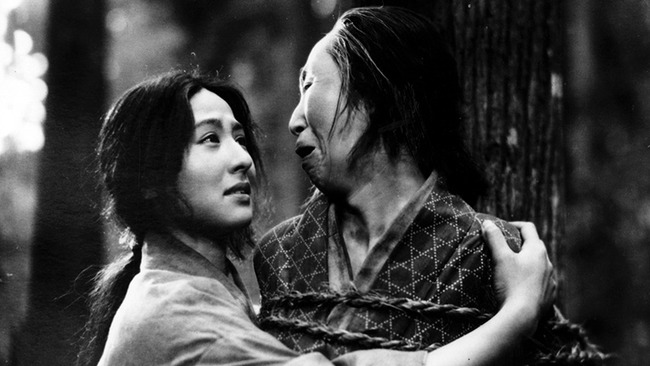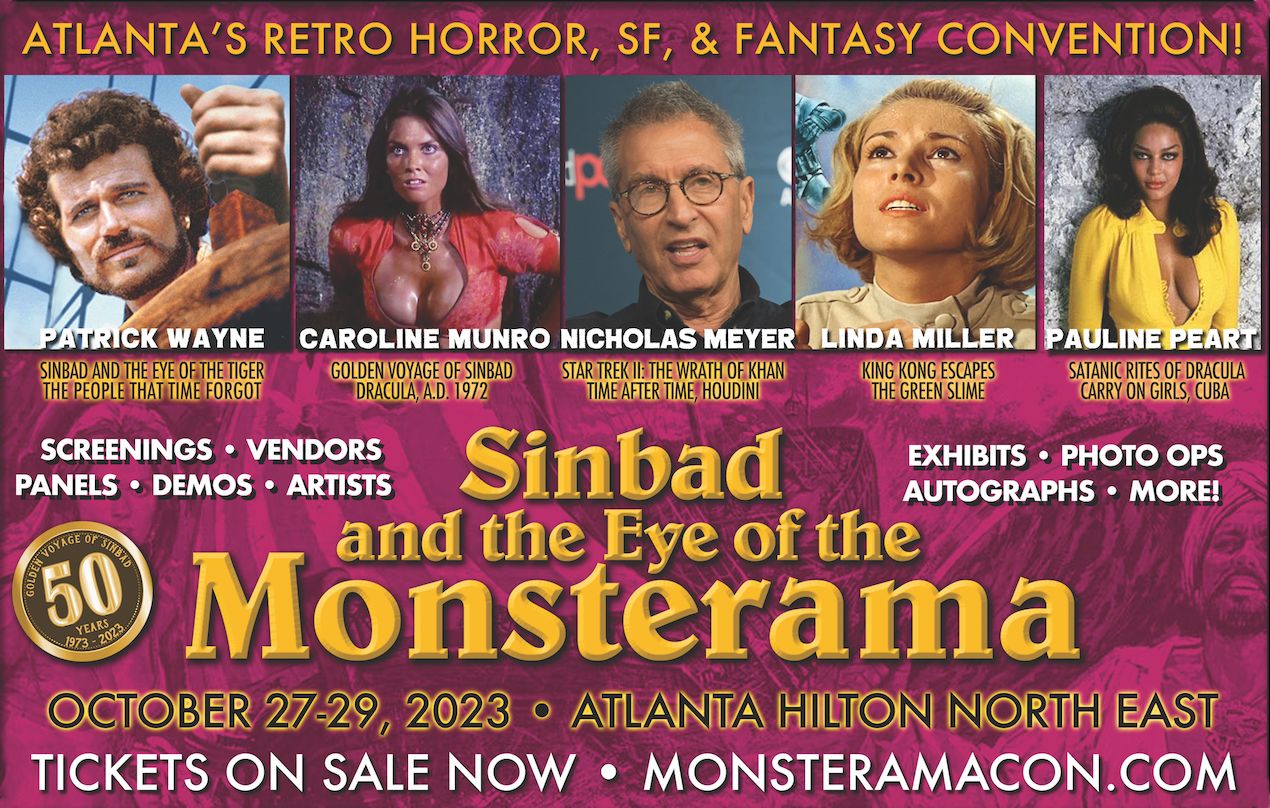Still image from Sansho the Bailiff. ©Kadokawa-Daei Pictures and Janus Films
During the course of our interview, I directly asked Dr. Angles about specific films and literature that he would like to point out and recommend to our readers. Due to time and text length constraints, we had to sadly cut that portion of our interview. However, I felt that it was too important to leave on the cutting room floor and decided to post it as its own mini part two to our full-length interview. Now, for the enjoyment of our Kaiju United readers, is a full list of movies and books that the translator of “Godzilla” and expert in Japanese literature and history, Jeffrey Angles, thinks you should read or watch. Included is the theatrical poster, general info, and availability.
We hope you enjoy this bonus piece of the interview with Dr. Angles!
Bold – Dr. Jeffrey Angles’ thoughts on the film from our interview.
Default Text – Information and notes.
Italics – Synopsis from The Criterion Collection, IMDb, and book publishers.
Films:
Directed by Kenji Mizoguchi
Available officially on Criterion Collection and The Criterion Channel.
** Dr. Angles also did a voice-over commentary for this film.

“When an idealistic governor disobeys the reigning feudal lord, he is cast into exile, his wife and children left to fend for themselves and eventually wrenched apart by vicious slave traders. Under Kenji Mizoguchi’s dazzling direction, this classic Japanese story became one of cinema’s greatest masterpieces, a monumental, empathetic expression of human resilience in the face of evil.” – The Criterion Collection
Angles: Oh yes! I love Sansho the Bailiff, the Japanese movie released in Japan under the title Sanshō Dayu. If we have kaiju fans reading here, just know that this is like a totally different world than then the kaiju films and tokustasu fare that you can see also on Criterion Channel. Sansho the Bailiff is a profoundly beautiful film from the 1950’s—a sad melodrama based on a Japanese folk tale but turned into riveting, heart-wrenching drama about children that separated from their parents in medieval Japan. Over the course of the film, they are sold into slavery and strive to reunite with the family.
I’m really interested in adaptations and how stories change over time in different situations. That’s part of the reason I’m so interested in Godzilla—I want to see the different incarnations of the story and try to understand why it evolved in the way that it did. I hadn’t really thought about it until this very moment, but that film, Sansho the Bailiff, was released in 1954, the exact same year as the first Godzilla, so there’s some connective tissue right there in the history of Japanese cinema!
The original story of for Sansho the Bailiff was a medieval, supernatural story known as a sekkyō-bushi, told by itinerant storytellers who were wandering the length of Japan. In the earliest versions of the story, deities appear here and there and help out the characters. But, when it was made into a film, it was changed a fairy-tale-like fantasy into a much more realistic drama.
Overall, it’s just a fantastic film. It gives the most in depth view, other than Godzilla, at what was happening in Japanese film in the 1950s. It was also a hugely innovative film, shot in stunning beautiful, high-contrast black and white. There are scenes in there where you just want to linger and live within the frame of the film for a second. It’s gorgeous! And it’s hard to watch it to the end with dry eyes.
Ugetsu (1953)
Directed by Kenji Mizoguchi
Available officially on Criterion Collection and The Criterion Channel.

Moving between the terrestrial and the otherworldly, Ugetsu reveals essential truths about the ravages of war, the plight of women, and the pride of men. – The Criterion Collection
Angles: Ugetsu is easily in my top 10 of all Japanese films. It’s dreamy, strange, and has a really otherworldly ghost story woven into it. I can’t recommend it highly enough. Again, it’s based on an old piece of premodern Japanese fiction, so it represents an interesting take and adaptation on an original, classic work.
The film is a reflection on how people live after war and complete disaster, so there is some thematic overlap with the original Godzilla in that regard. This film was released in 1953, just one year before Godzilla, and like Godzilla, it struck a chord among the Japanese viewing public, which remembered its own traumas with war just a few years earlier. This was directed by Kenji Mizoguchi, who also did Sansho the Bailiff.
Directed by Andrei Tarkovsky
Available officially on The Criterion Collection and The Criterion Channel.

Angles: I’ve just been on a little binge rewatching the movies of Andrei Tarkovsky, the Soviet director—a genius at the highest level. This is probably the third or fourth time I’ve watched this film, and it’s always a wonderful experience. You might think, “Is it subtitled?” The answer is, yes, of course it is. Watch it anyway.
The film is a science fiction epic, bringing us an in-depth examination of the human conditions and experiences, and the inner truths behind them. This film asks important questions. How important is memory and longing in the formation of our personalities? Can we exist without longing? Does truth matter when we are more comfortable living with our fantasies? Directed by the Soviet powerhouse Andrei Tarkovsky, this film, alongside his other film, Stalker, are essential art house masterpieces.
Shoplifters (2018)
Directed by Hirokazu Koreeda
Available on Max, Hulu, and Prime Video.

“On the margins of Tokyo, a dysfunctional band of outsiders are united by loyalty, a penchant for petty theft and playful grifting. When the young son is arrested, secrets are exposed that upend their tenuous, below-the-radar existence.” — Internet Movie Database
Angles: I adore all the films of director Hirokazu Koreeda. His most famous film is Shoplifters, which came out in 2018 and won the best film award at Cannes Film Festival! It’s a truly beautiful experience. He creates these fantastic, intimate, powerful stories where you truly invest in the grain of a family’s day-to-day life. With Koreeda, there are lots of unscripted moments in his films where he has the main cast live and interact with each other. Those small, intimate moments in the film give an intense, tight-knit feeling as if you too are living with them. The movie was so lovely in a melancholy way that it left me a wreck, honestly. I had tears streaming down my face! It’s an incredible film that every person should experience.
Literature:
Woman of the Dunes (1962)
Written by Kōbō Abe
Available at major retailers in paperback.

Angles: One of my absolute favorite books of all time is Woman in the Dunes. For context, it was written by a prolific Japanese writer who started off writing a lot of science and speculative fiction in the 1950s and 60s. His name was Kobo Abe, and in my opinion, he was a genius. Woman in the Dunes is a realistic story based on an absurdly, unrealistic premise: a guy gets thrown into a big sandpit where he finds another woman living, and together they have to spend the rest of their days digging out the sand to avoid being consumed by the dunes. It is a brilliant commentary on what it means to work—to be part of a capitalist society where we’re forced to continually perform routine, mundane work, doing the same thing over and over again just to survive. The movie makes us think about how we find meaning in our lives when all we ever accomplish is just keep ourselves from being buried.
There’s a film version of it too, which is as good as the book. It might even be one of the very few cases where I think the film adaptation might even be better. It’s claustrophobic, eerie, and filled with existential dread. It’s directed by one of the most avant-garde filmmakers of mid-century Japan, Hiroshi Teshigahara, who also did Pitfall in 1962. He also did one other film based on a book, also by Kobo Abe, called The Face of Another, another brilliant piece of mid-century Japanese science fiction. The film is about a person, who through surgery gets the face of another person, but then he starts wondering what his new identity entails. How much of our existence is determined by who we are inside, and who we seem to be on the exterior? Who is the real “me”? The self that exists inwardly, or the self that exists in the minds of others? I love these sort of existential questions!
Japanese Tales of Mystery and Imagination
By Edogawa Ranpo
Translated by James B. Harris
Available via Tuttle Publishing and most retailers.

Japanese Tales of Mystery & Imagination, the first volume of its kind translated into English, is written with the quick tempo of the West but rich with the fantasy of the East. These nine bloodcurdling, chilling tales present a genre of literature largely unknown to readers outside Japan, including the strange story of a quadruple amputee and his perverse wife; the record of a man who creates a mysterious chamber of mirrors and discovers hidden pleasures within; the morbid confession of a maniac who envisions a career of foolproof “psychological” murders; and the bizarre tale of a chair-maker who buries himself inside an armchair and enjoys the sordid “loves” of the women who sit on his handiwork. – Tuttle Publishing
Angles: I did my dissertation on a guy by the name of Edogawa Ranpo, a famous Japanese mystery writer who took his name from Edgar Allen Poe. Say it out loud and it makes sense—Edogawa Ranpo. [Laugh] That’s his name in the traditional Japanese order, with surname first. The wordplay doesn’t work if you put his name in the Western order. Anyway, he wrote lots of stories during the 1930s about weird creatures, dastardly villains, almost supernaturally brilliant detectives, and all sorts of strange, erotic, grotesque things, and almost nonsensical plot turns. I see Nobuyuki Obayashi’s House and School in the Crosshairs as the modern inheritor of these same pre-war sensibilities forged by Ranpo and his generation. As I watch these films, the nerdy part of me is thinking about how they’re connected to what came before.
For Godzilla fans, I should mention that Edogawa Ranpo was one of the founders of a magazine called The Jewel (Hōseki) founded in 1946, the year after the end of World War II. The Jewel was immediately popular because readers were starving for good, non-propagandistic literature after the heavy censorship of wartime Imperial Japan, and almost immediately, it became one of Japan’s foremost venues for detective fiction, crime stories, and adventure tales. In 1947, Shigeru Kayama, the author who would later go on to write the novellas Godzilla and Godzilla Raids Again that I’ve just translated, started his career by publishing in The Jewel. The magazine had hosted a competition to find and support new writers, and Kayama’s debut story was one of a handful of pieces selected from hundreds of submissions. When I first read Kayama’s work, I thought I detected a similarity between his style and the prewar literature written by other writers in Ranpo’s circle, and indeed, this similarity was no coincidence. Not only did Kayama grow up reading Ranpo, a personal connection was made concrete through The Jewel.
Everything is connected.
One of our true passions at Kaiju United is having people come for the kaiju films & television but stay for the amazing non creature feature recommendations. There is a whole vast universe of movies worth experiencing from different countries, often by the same directors as typical kaiju and other genre film. We hope this list inspires you to track down some of these films and books, and that perhaps Jeffrey can make you into a fan of some more Japanese works through his translations and genuine love for Japanese media. Thank you again, Jeffrey, for speaking to us about Japanese culture, sharing your love for Godzilla, and recommending some incredible films to our readers!
References
Sansho the Bailiff. The Criterion Collection.
https://www.criterion.com/films/823-sansho-the-bailiff
Ugetsu. The Criterion Collection.
https://www.criterion.com/films/369-ugetsu
Solaris. The Criterion Collection.
https://www.criterion.com/films/553-solaris
Shoplifters. Magnolia Pictures.
http://www.magpictures.com/shoplifters/share/
Japanese Tales of Mystery and Imagination. Tuttle Publishing.
https://www.tuttlepublishing.com/books-by-country/japanese-tales-of-mystery-and-imagination
The Woman in the Dunes. Front Cover Image. Yasuo Kazuki
Picture taken of library book, Fair use, https://en.wikipedia.org/w/index.php?curid=70557919





